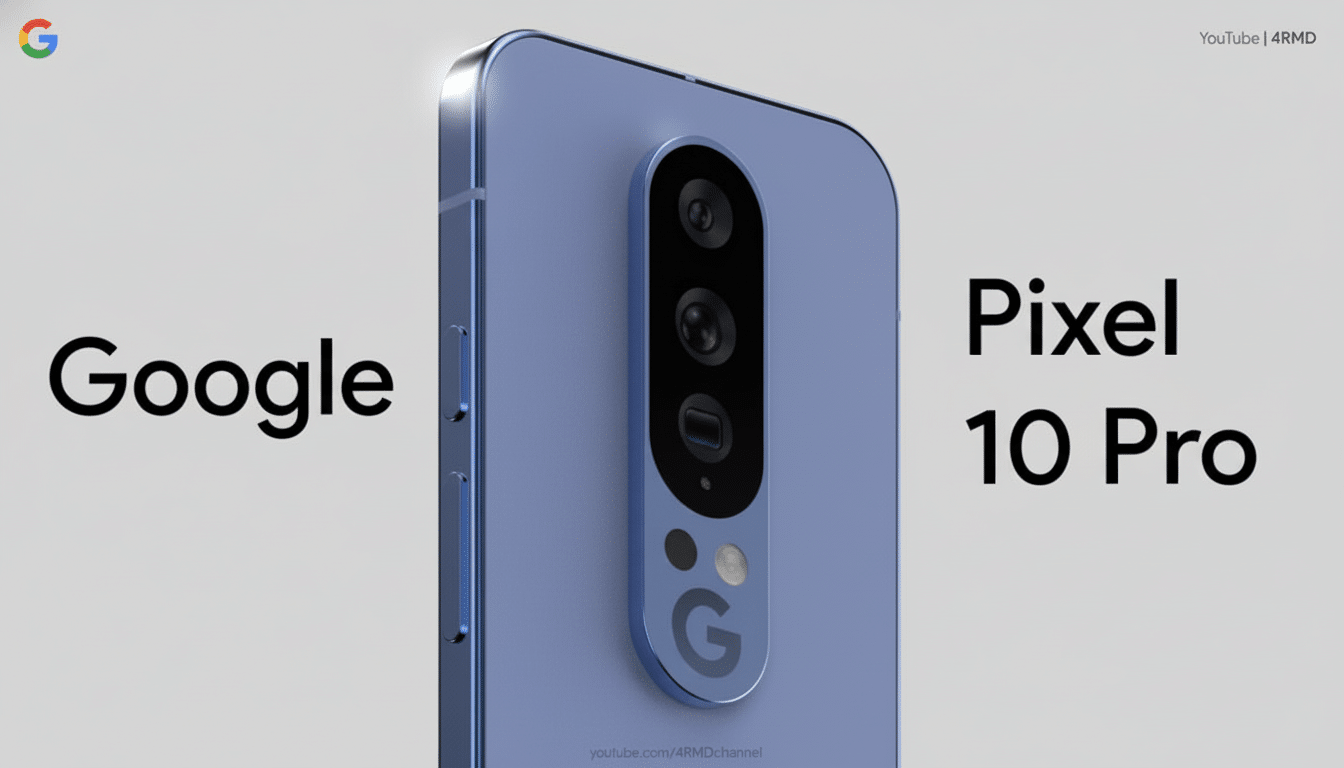I conducted a head-to-head camera test between the Pixel 10 Pro and the Pixel 9 Pro expecting near ties. On paper, they have the same core sensors. In use, the newer phone continued to deliver richer, clearer, and more accurate imagery on a consistent basis. The gap is not too subtle, appearing in color rendering and stabilization, but particularly so in long-range zoom.
It was one of those rare head-to-head comparisons where identical hardware didn’t equal identical pictures. The Pixel 10 Pro’s imaging pipeline has been distinctly retuned, and the results bemused me over dozens of samples in different light.

What Changed Even When Using The Same Sensors
Both phones share a 50MP primary sensor, 48MP ultrawide (123° field of view), and a 48MP telephoto providing a full range of zoom at up to 5x optical. In front, there is a 42MP selfie camera too—with autofocus and a FoV of 103°. Where the Pixel 10 Pro stands out, however, is in the details: enhanced stabilization and far more aggressive computational zoom; Google calls it 100x Pro Res Zoom versus the Pixel 9 Pro’s upper limit of 30x.
The gap aligns with what imaging researchers have been saying for years: software trumps spec sheets. The work of Google Research on HDR+, multi-frame fusion, and scene segmentation could change the look of a camera from one generation to the next, even without new sensors. Independent testing outfits like DXOMARK have always said that tuning can take exposure handling and texture preservation to a level higher than what the hardware suggests.
Victory of Primary Camera Color Science in Tests
Color is where the Pixel 10 Pro easily started to pull ahead. In scenes shot during the day, foliage appeared greener without looking radioactive, skies looked bluer, and reds popped without clipping. A produce stand photo is a great example: tomatoes looked more vibrant and richer in color on the Pixel 10 Pro, but also truer to what my eyes saw. The version on the Pixel 9 Pro seemed flatter and a bit gray.
High-contrast scenes amplified the gap. Sunsets over the water kept the sun’s warm orange halo in check (in its own little bubble field) on our Pixel 10 Pro, leaving blue gradients at the top of the sky and deep navy in the waves. On average, the Pixel 9 Pro was warmer overall, with the scene having an orange cast that dulled cool tones. The newer phone preferred deeper shadows and cleaner midtones, putting more of a punch in wood grain and the nearby trees without smearing.
Stabilization And Sharpness, You Can See
I also noticed that handheld shots requiring micro-stability were distinctly better on the Pixel 10 Pro. Tiny textures—text on a sign, cords hanging from a lamp, slender branches—were tack-sharp more frequently. Micro-shake and not-so-effective multi-frame fusion otherwise softened edges or blurred small details, which was observed with the old model from time to time.
Night scenes underscored that difference. The Pixel 10 Pro’s point light sources were tamed much more gracefully, avoiding overexposure while preserving detail in surrounding areas. On architecture, tiny serif lettering and brick patterns remained legible, suggesting closer coherence in the frame stack and better electronic stabilization interacting with the optical system.

It’s the Ultrawide and Telephoto That Differ Most
On the ultrawide cameras, both phones achieved comparable field of view and distortion correction, but with color and contrast the Pixel 10 Pro pulled further ahead. Landscapes were more vibrant: bluer skies, greener grass, and warmer earth tones that didn’t feel overcooked.
Telephoto is where the story veers from taste to ability. At 10x, the two were about even in daylight, but with slightly crisper feather and fur textures on wildlife for the Pixel 10 Pro. At 30x, the disparity became unmistakable. The Pro Res Zoom in the Pixel 10 Pro mixed AI-based upscaling and detail enhancement to create fine structures—single feathers, thin rigging on far-off buildings—that the Pixel 9 Pro just couldn’t resolve.
Even before we get to computational zoom, the 5x optical range played in favor of the newer model. Leaves, shingles, and small typography appeared cleaner and with more contrast on the Pixel 10 Pro—indicating improved optical stabilization calibration and sharpening that’s free of halos. That 100x stretch has done its bit when needing to frame up a shot of something off in the distance, grab a readable sign across a harbor (I wouldn’t do that with the Pixel 9 Pro).
Selfies and Skin Tone Uniformity Across Lighting
Outside, it was neck and neck for selfie quality—sharp, well-exposed selfies with dependable autofocusing. Indoors, the Pixel 10 Pro was also more likely to snap a brighter, warmer shot with accurate skin tone throughout. Tone is one’s skin tone relative to the background: richer, more muted, or pastel colors among Caucasian people, browns and darker shades for Black people (as well as “light” Africans), etc. It sounds similar to Google’s Real Tone efforts that have been discussed publicly by them and cited by outside reviews in trying to ensure better rendering across complexions and lighting.
The Upgrade Verdict for Pixel Photographers
Considering that the sensors are shared, I was not expecting a whole lot. Instead, the Pixel 10 Pro consistently served up more accurate color, clearer tones, and sharper details, along with better long-range zoom. If you really care about photography, the camera alone is a meaningful step up from the Pixel 9 Pro.
The Pixel 9 Pro is still a solid shooter. But if you care about realistic colors, solid handheld sharpness, and a telephoto that truly reaches (though the Pixel 10 Pro’s image quality doesn’t quite deliver here), the results of the Pixel 10 Pro speak for themselves. It’s proof, backed up by years of research and field testing: When it comes to smartphone imaging, smarter processing can trump new glass, and this year’s fine-tuning is a standout example.

